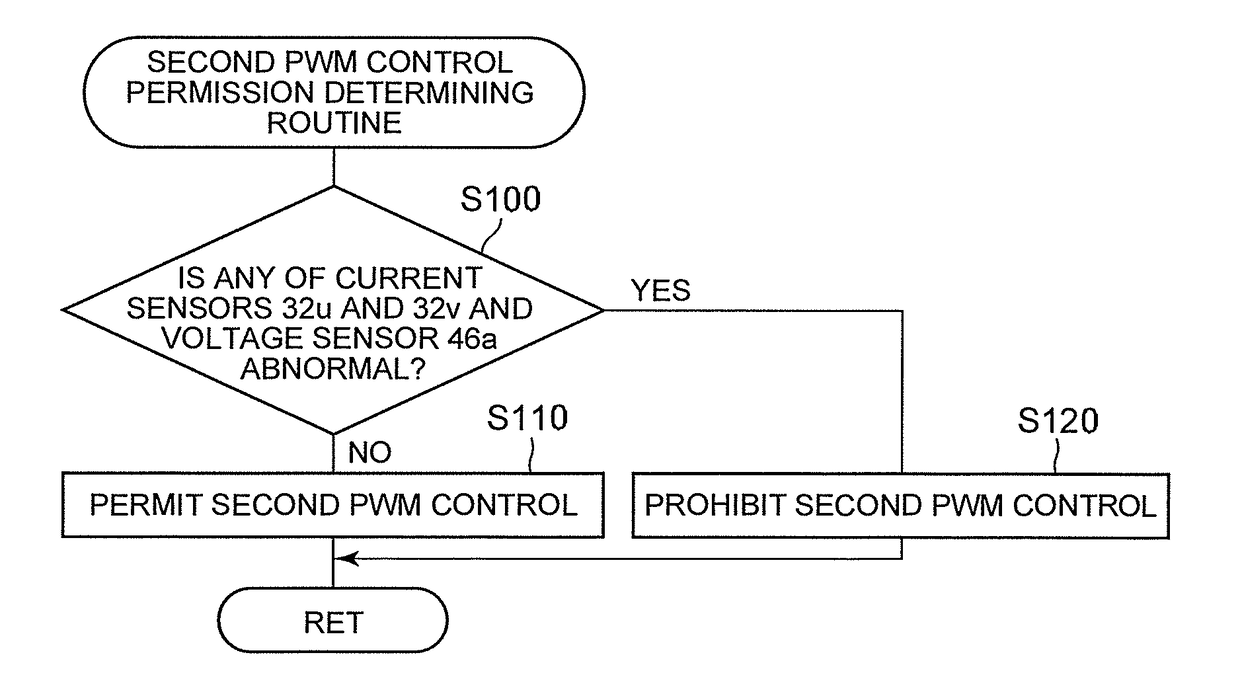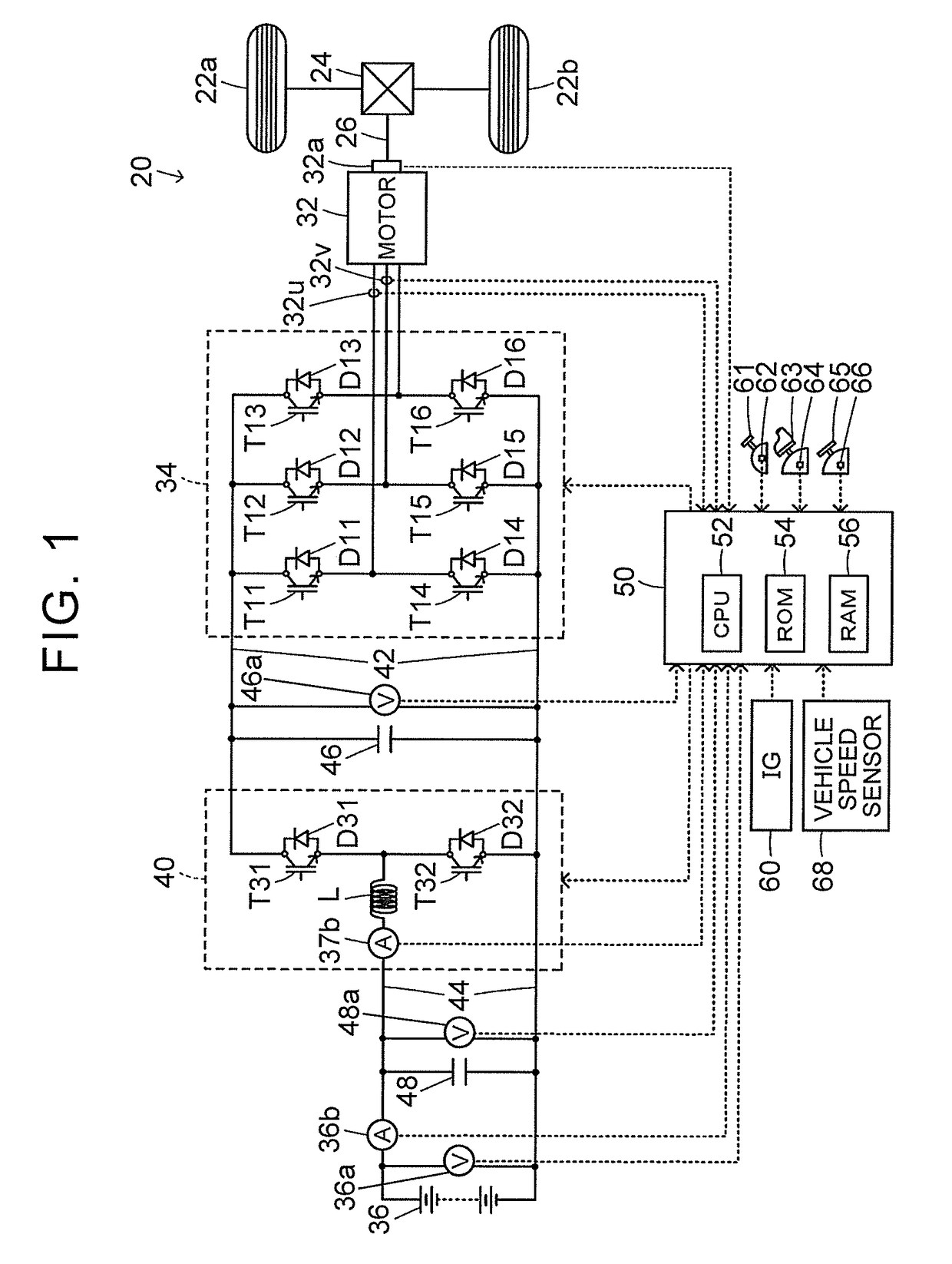Vehicle including electronic control unit configured to control inverter
a technology of electronic control unit and inverter, which is applied in the field of vehicles, can solve the problems of inability to execute the second pwm control, inability to control the second pwm, so as to reduce the responsiveness of the electric motor, and prevent an overcurrent or an overvoltage
- Summary
- Abstract
- Description
- Claims
- Application Information
AI Technical Summary
Benefits of technology
Problems solved by technology
Method used
Image
Examples
Embodiment Construction
[0014]Hereinafter, an embodiment of the disclosure will be described with reference to an example.
[0015]FIG. 1 is a diagram schematically illustrating a configuration of an electric vehicle 20 according to an embodiment of the disclosure. The electric vehicle 20 according to the embodiment includes a motor 32, an inverter 34, a battery 36, a boost converter 40, and an electronic control unit 50 as illustrated in the drawing.
[0016]The motor 32 is constituted by a synchronous generator-motor and includes a rotor in which a permanent magnet is embedded and a stator on which a three-phase coil is wound. The rotor of the motor 32 is connected to a drive shaft 26 which is connected to driving wheels 22a and 22b via a differential gear 24.
[0017]The inverter 34 is connected to the motor 32 and is also connected to the boost converter 40 via a high-voltage power line 42. The inverter 34 includes six transistors T11 to T16 and six diodes D11 to D16. The transistors T11 to T16 are arranged as ...
PUM
 Login to View More
Login to View More Abstract
Description
Claims
Application Information
 Login to View More
Login to View More - R&D
- Intellectual Property
- Life Sciences
- Materials
- Tech Scout
- Unparalleled Data Quality
- Higher Quality Content
- 60% Fewer Hallucinations
Browse by: Latest US Patents, China's latest patents, Technical Efficacy Thesaurus, Application Domain, Technology Topic, Popular Technical Reports.
© 2025 PatSnap. All rights reserved.Legal|Privacy policy|Modern Slavery Act Transparency Statement|Sitemap|About US| Contact US: help@patsnap.com



